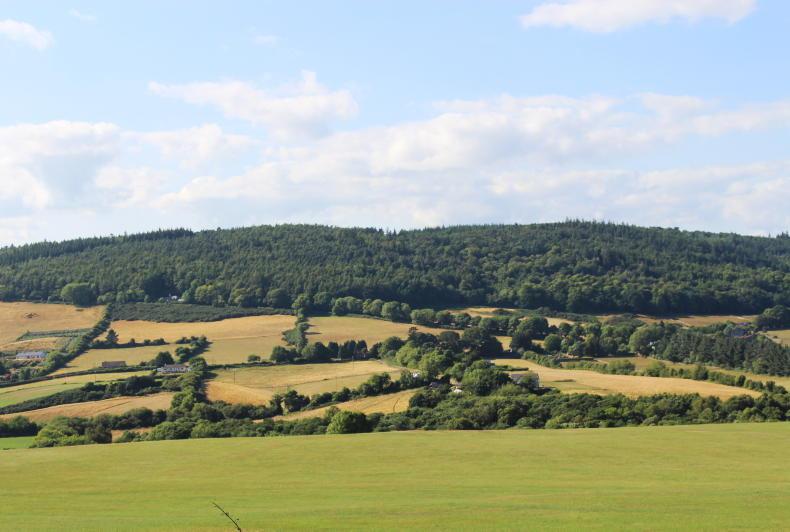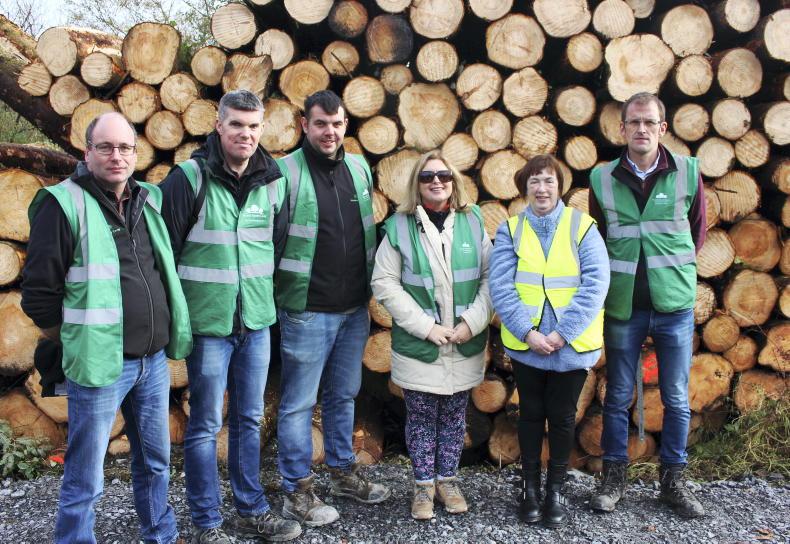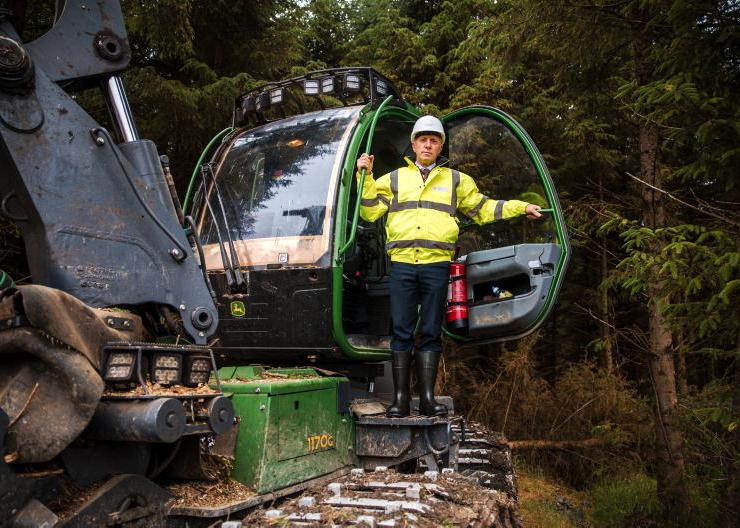All Citizens’ Assembly reports to date have implications for society at large, but two in particular will impact on agriculture and forestry directly. They are:
How the State can make Ireland a leader in tackling climate change; and Biodiversity loss.If implemented, they will have major implications for future land use and the productivity and performance of agriculture and forestry. Both CA reports have made strong and far reaching recommendations, but there has been little critical analysis of their findings.
The CA report on climate change issued in 2018 has largely been superseded by three Climate Action Plans (2019, 2021 and 2023). Many of the climate plans’ recommendations on how Ireland can achieve net zero by 2050 weren’t even discussed by the assembly.
For example, the climate plan identifies afforestation as the single most important land use in achieving carbon neutrality. In addition, it acknowledges industrial forestry as providing wood in displacing fossil-based materials in construction and energy.
Within the limited time available to achieve net zero, conifers are the only tree species to displace steel, concrete and brick in construction. This is now acknowledged throughout Europe and North America where large-scale mass wood construction, in Norway spruce, Douglas fir and Scots pine, is regarded as the best option to reduce carbon emissions. According to Architecture 2030, “the built environment generates 40% of annual global CO2 emissions”.
The CA made no mention of wood as a substitute for fossil-based materials in construction and also ignored the role of wood in renewable energy.
While the assembly was highly impressed by Denmark’s approach to renewables, in particular wind energy, it failed to mention the fact that the Danes rely on wood biomass for almost half of their renewable energy supply.
However, the CA made a number of solid proposals especially in relation to the State’s involvement in “addressing climate change through mitigation measures” such as “retrofitting public buildings, having low carbon public vehicles [and] renewable generation on public buildings”.
The forum also believed the State has a role in “encouraging communities to develop their own projects and by requiring that developer-led projects make share offers to communities to encourage greater local involvement and ownership”.
The CA on climate change benefitted from making concise proposals – 17 in all.
Biodiversity
The biodiversity CA on the other hand is awash with proposals which must surely dilute its findings. It made 159 proposals comprising “73 high-level recommendations and 86 sectoral specific recommendations”.
The CA findings are influenced by presentations made by experts in various related areas of expertise. There is no evidence in the final report that any of the presentations were subject to critical analysis.
Take Dr Ferdia Marnell’s presentation on how little land is available for biodiversity.
“Today 65% of our landscape is agricultural and 10% intensive forestry,” the head of animal ecology, NPWS told the CA.
“Therefore, 75% of our landscape is relatively intensively managed. Most of our biodiversity is in the other 25%.”
Dr Marnell’s assessment discounts all agricultural land and 90% of forests as having biodiversity value, so relies on 1.7m ha, “the other 25%” so relies on 1.7m ha (“the other 25%) as the only biodiversity land available. But is it? It is certainly incorrect in relation to forestry.
Forest cover in Ireland is 11.5% of the land area and if as Dr Marnell claims that 90% of this is “intensive forestry” (10% of the land area), then by his definition little more than 10% of forest land has biodiversity value.
This claim ignores the species breakdown of Irish forests and their silviculture. As the total forest estate – public and private – comprises 27% mainly native broadleaves, 10% biodiverse open spaces and a small portion of high-value diverse conifers (2-3%) including Ireland’s only native conifer – Scots pine – it is likely, that 40% of Irish forests or 324,000ha are minimally disturbed ecosystems, amounting to 46% of the forest area, not 10% as Dr Marnell claims.
Add 47,681ha (0.7% of the land area) of small wooded and scrub areas and 271,912ha (3.9%) of hedgerows identified in the National Forest Inventory, the total biodiversity area increases from 25% to 34.2% (600,680ha) before any agricultural land is assessed for its biodiversity benefits.
A number of contributors to the CA estimated that between 17% and 33% of agricultural land has strong biodiversity claims.
Biodiversity measurement in agricultural land depends on management intensity and how this is measured. The COFORD Land Availability for Afforestation report produced by Dr Niall Farrelly, Teagasc and Dr Gerhardt Gallagher, forestry consultant, provides interesting data on existing land use. They estimated 2.39m ha (52% of the land area) as highly productive agricultural land with the remainder categorised as low to non-productive land.
Even if all highly productive agricultural land is discounted, which farmers would dispute, there is still a large area of land remaining that has high biodiversity value.
A conservative estimate that 35% of this land has high biodiversity value adds 850,000ha to the biodiversity land pool
According to Farrelly and Gallagher, this area amounts to 2.3m ha categorised as limited use (1.1m ha), poor land not farmed (0.3m ha) and 0.9m ha of land with national and EU environmental designations.
A conservative estimate that 35% of this land has high biodiversity value adds 850,000ha to the biodiversity land pool. This amounts to 17% of all agricultural land which is a conservative estimate when compared with Paul O’Brien’s presentation to the CA. The Co Kilkenny tillage farmer and IFA member told the assembly that “one third of farms are classified as high nature value”.
If the 850,000ha is accepted as the minimum area of agricultural land with biodiversity value along with the aforementioned 600,680ha of native forests, biodiverse unplanted forest areas, scrubland and hedgerows, this increases the biodiversity area by 1.4m ha.
Total biodiversity area
It provides a total biodiversity area – agricultural and non-agricultural land – of 3.1m ha compared with Dr Marnell’s estimate of 1.7m ha.
This is not to dilute the major challenges as outlined by CA chair Dr Aoibhinn Ní Shúilleabháin, especially in relation to biodiversity loss including a decline of “at least one third of protected species…both on land and under water”.
But if the area of high biodiversity value agriculture and forest land is accepted as much larger than presented to the CA, it creates a more positive debate and narrative on how we tackle Ireland’s biodiversity challenge.
It also emphasises “the need for baseline information about farm biodiversity” as proposed by Shane Fitzgerald, a progressive and environmentally conscious Co Waterford dairy farmer and Macra representative.
The Citizens’ Assembly (CA) was established in 2016 to consider and make recommendations on a range of political issues.
Comprising 99 member of the public, randomly selected but broadly based, each assembly meets on three occasions to hear presentations by specialist speakers to inform their decision making.
The CA makes recommendations to the Houses of the Oireachtas and is proving to be a major force for political change in Ireland. For example, two constitutional amendments – marriage equality and replacing the Eight Amendment – were recommended by the CA and its forerunner the Convention on the Constitution.
Changes
The current CA on Drugs Use is considering “the legislative, policy and operational changes Ireland could make to significantly reduce the harmful impacts of illicit drugs on individuals, families, communities and wider Irish society”.
The recommendations of all CAs have implications for society at large including the two CA reports, on climate change and biodiversity discussed here.
These will have a major impact on farmers and forest owners who will be charged with carrying out land use changes if many of the recommendations are accepted by Government.
All Citizens’ Assembly reports to date have implications for society at large, but two in particular will impact on agriculture and forestry directly. They are:
How the State can make Ireland a leader in tackling climate change; and Biodiversity loss.If implemented, they will have major implications for future land use and the productivity and performance of agriculture and forestry. Both CA reports have made strong and far reaching recommendations, but there has been little critical analysis of their findings.
The CA report on climate change issued in 2018 has largely been superseded by three Climate Action Plans (2019, 2021 and 2023). Many of the climate plans’ recommendations on how Ireland can achieve net zero by 2050 weren’t even discussed by the assembly.
For example, the climate plan identifies afforestation as the single most important land use in achieving carbon neutrality. In addition, it acknowledges industrial forestry as providing wood in displacing fossil-based materials in construction and energy.
Within the limited time available to achieve net zero, conifers are the only tree species to displace steel, concrete and brick in construction. This is now acknowledged throughout Europe and North America where large-scale mass wood construction, in Norway spruce, Douglas fir and Scots pine, is regarded as the best option to reduce carbon emissions. According to Architecture 2030, “the built environment generates 40% of annual global CO2 emissions”.
The CA made no mention of wood as a substitute for fossil-based materials in construction and also ignored the role of wood in renewable energy.
While the assembly was highly impressed by Denmark’s approach to renewables, in particular wind energy, it failed to mention the fact that the Danes rely on wood biomass for almost half of their renewable energy supply.
However, the CA made a number of solid proposals especially in relation to the State’s involvement in “addressing climate change through mitigation measures” such as “retrofitting public buildings, having low carbon public vehicles [and] renewable generation on public buildings”.
The forum also believed the State has a role in “encouraging communities to develop their own projects and by requiring that developer-led projects make share offers to communities to encourage greater local involvement and ownership”.
The CA on climate change benefitted from making concise proposals – 17 in all.
Biodiversity
The biodiversity CA on the other hand is awash with proposals which must surely dilute its findings. It made 159 proposals comprising “73 high-level recommendations and 86 sectoral specific recommendations”.
The CA findings are influenced by presentations made by experts in various related areas of expertise. There is no evidence in the final report that any of the presentations were subject to critical analysis.
Take Dr Ferdia Marnell’s presentation on how little land is available for biodiversity.
“Today 65% of our landscape is agricultural and 10% intensive forestry,” the head of animal ecology, NPWS told the CA.
“Therefore, 75% of our landscape is relatively intensively managed. Most of our biodiversity is in the other 25%.”
Dr Marnell’s assessment discounts all agricultural land and 90% of forests as having biodiversity value, so relies on 1.7m ha, “the other 25%” so relies on 1.7m ha (“the other 25%) as the only biodiversity land available. But is it? It is certainly incorrect in relation to forestry.
Forest cover in Ireland is 11.5% of the land area and if as Dr Marnell claims that 90% of this is “intensive forestry” (10% of the land area), then by his definition little more than 10% of forest land has biodiversity value.
This claim ignores the species breakdown of Irish forests and their silviculture. As the total forest estate – public and private – comprises 27% mainly native broadleaves, 10% biodiverse open spaces and a small portion of high-value diverse conifers (2-3%) including Ireland’s only native conifer – Scots pine – it is likely, that 40% of Irish forests or 324,000ha are minimally disturbed ecosystems, amounting to 46% of the forest area, not 10% as Dr Marnell claims.
Add 47,681ha (0.7% of the land area) of small wooded and scrub areas and 271,912ha (3.9%) of hedgerows identified in the National Forest Inventory, the total biodiversity area increases from 25% to 34.2% (600,680ha) before any agricultural land is assessed for its biodiversity benefits.
A number of contributors to the CA estimated that between 17% and 33% of agricultural land has strong biodiversity claims.
Biodiversity measurement in agricultural land depends on management intensity and how this is measured. The COFORD Land Availability for Afforestation report produced by Dr Niall Farrelly, Teagasc and Dr Gerhardt Gallagher, forestry consultant, provides interesting data on existing land use. They estimated 2.39m ha (52% of the land area) as highly productive agricultural land with the remainder categorised as low to non-productive land.
Even if all highly productive agricultural land is discounted, which farmers would dispute, there is still a large area of land remaining that has high biodiversity value.
A conservative estimate that 35% of this land has high biodiversity value adds 850,000ha to the biodiversity land pool
According to Farrelly and Gallagher, this area amounts to 2.3m ha categorised as limited use (1.1m ha), poor land not farmed (0.3m ha) and 0.9m ha of land with national and EU environmental designations.
A conservative estimate that 35% of this land has high biodiversity value adds 850,000ha to the biodiversity land pool. This amounts to 17% of all agricultural land which is a conservative estimate when compared with Paul O’Brien’s presentation to the CA. The Co Kilkenny tillage farmer and IFA member told the assembly that “one third of farms are classified as high nature value”.
If the 850,000ha is accepted as the minimum area of agricultural land with biodiversity value along with the aforementioned 600,680ha of native forests, biodiverse unplanted forest areas, scrubland and hedgerows, this increases the biodiversity area by 1.4m ha.
Total biodiversity area
It provides a total biodiversity area – agricultural and non-agricultural land – of 3.1m ha compared with Dr Marnell’s estimate of 1.7m ha.
This is not to dilute the major challenges as outlined by CA chair Dr Aoibhinn Ní Shúilleabháin, especially in relation to biodiversity loss including a decline of “at least one third of protected species…both on land and under water”.
But if the area of high biodiversity value agriculture and forest land is accepted as much larger than presented to the CA, it creates a more positive debate and narrative on how we tackle Ireland’s biodiversity challenge.
It also emphasises “the need for baseline information about farm biodiversity” as proposed by Shane Fitzgerald, a progressive and environmentally conscious Co Waterford dairy farmer and Macra representative.
The Citizens’ Assembly (CA) was established in 2016 to consider and make recommendations on a range of political issues.
Comprising 99 member of the public, randomly selected but broadly based, each assembly meets on three occasions to hear presentations by specialist speakers to inform their decision making.
The CA makes recommendations to the Houses of the Oireachtas and is proving to be a major force for political change in Ireland. For example, two constitutional amendments – marriage equality and replacing the Eight Amendment – were recommended by the CA and its forerunner the Convention on the Constitution.
Changes
The current CA on Drugs Use is considering “the legislative, policy and operational changes Ireland could make to significantly reduce the harmful impacts of illicit drugs on individuals, families, communities and wider Irish society”.
The recommendations of all CAs have implications for society at large including the two CA reports, on climate change and biodiversity discussed here.
These will have a major impact on farmers and forest owners who will be charged with carrying out land use changes if many of the recommendations are accepted by Government.









SHARING OPTIONS